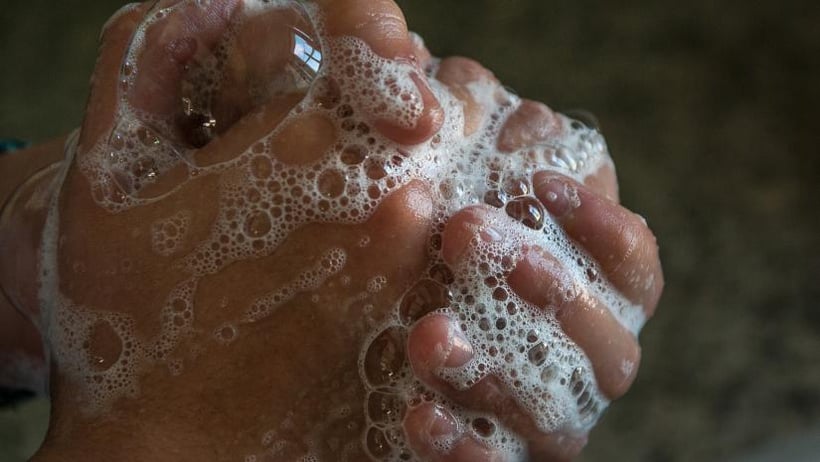
In some industries and if used correctly, research has shown that alcohol-based hand sanitizers can be as effective as hand washing with soap and water.
However, there are a number of reasons why hand sanitizers should be used only when soap and water is not readily available and should not be used as a substitute for proper hand washing, particularly by Food Handlers.
Read on to find out why.
Soap and water is more effective against certain pathogens
While alcohol-based hand sanitizers effectively kill most bacteria and viruses, hand washing with soap and water is proven to be more effective against certain pathogens, such as C. difficile and Norovirus.
Norovirus, the leading cause of food-borne illnesses and hospitalizations in Canada, is most commonly transmitted via food contaminated by Food Handlers who are (knowingly or unknowingly) infected with the virus.
People infected with Norovirus can be contagious from the moment they start feeling ill to up to two weeks after recovery.
Because hand sanitizer is less effective against Norovirus, proper hand washing with soap and water is critical to preventing the spread of food-borne infections.
Hand sanitizers may not be effective on soiled or greasy hands
Alcohol-based hand sanitizer has been proven to be effective in clinical settings like hospitals and care centres because healthcare workers’ hands are generally not visibly soiled or greasy.
Data suggests that the effectiveness of hand sanitizers depends on how much visible dirt or grease is present on the hands, which is why hand washing with soap and water is recommended when hands are more heavily soiled, such as with food waste or cooking oil.
Hand sanitizers are also unlikely to remove or inactivate harmful chemicals, so it is important to wash your hands carefully after using many common kitchen cleaning chemicals.
When and how to use hand sanitizer
It is recommended to wash your hands with soap and water whenever possible to remove all types of food-borne pathogens from your hands.
However, if you do not have access to water, use an alcohol-based hand sanitizer that contains at least 60% alcohol.
Be sure to apply a sufficient amount of hand sanitizer to cover both of your hands; rub the liquid into your palms, backs of hands, between fingers and under nails and allow it to dry completely (approximately 20 seconds).
Hand washing and food safety
Thorough and frequent hand washing is one of the most important things a Food Handler can do to ensure food safety in the workplace.
Four million Canadians are affected by food poisoning every year; to prevent food-borne illness and other food-related health risks, food safety training is regulated by various levels of the Canadian government.
Contact the Canadian Institute of Food Safety (CIFS) to learn about the food safety training requirements that apply to your business.




